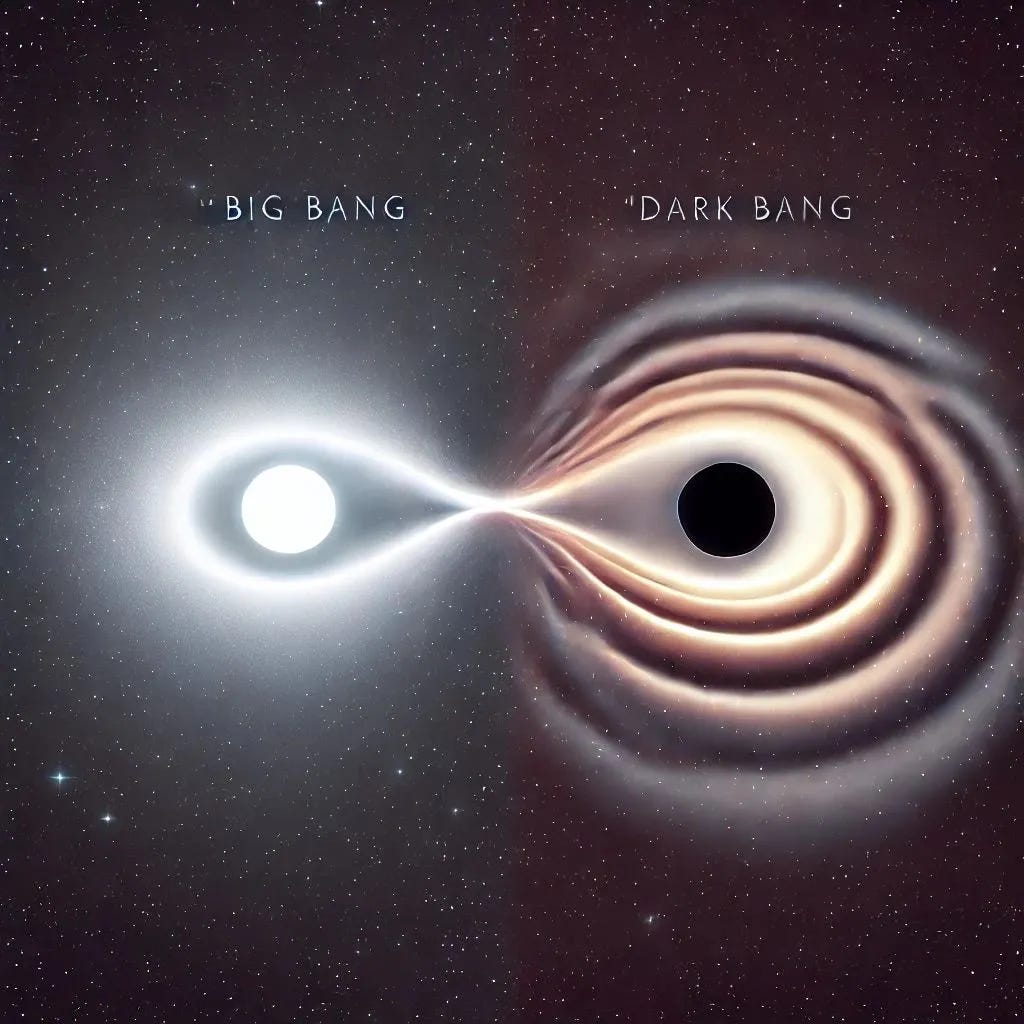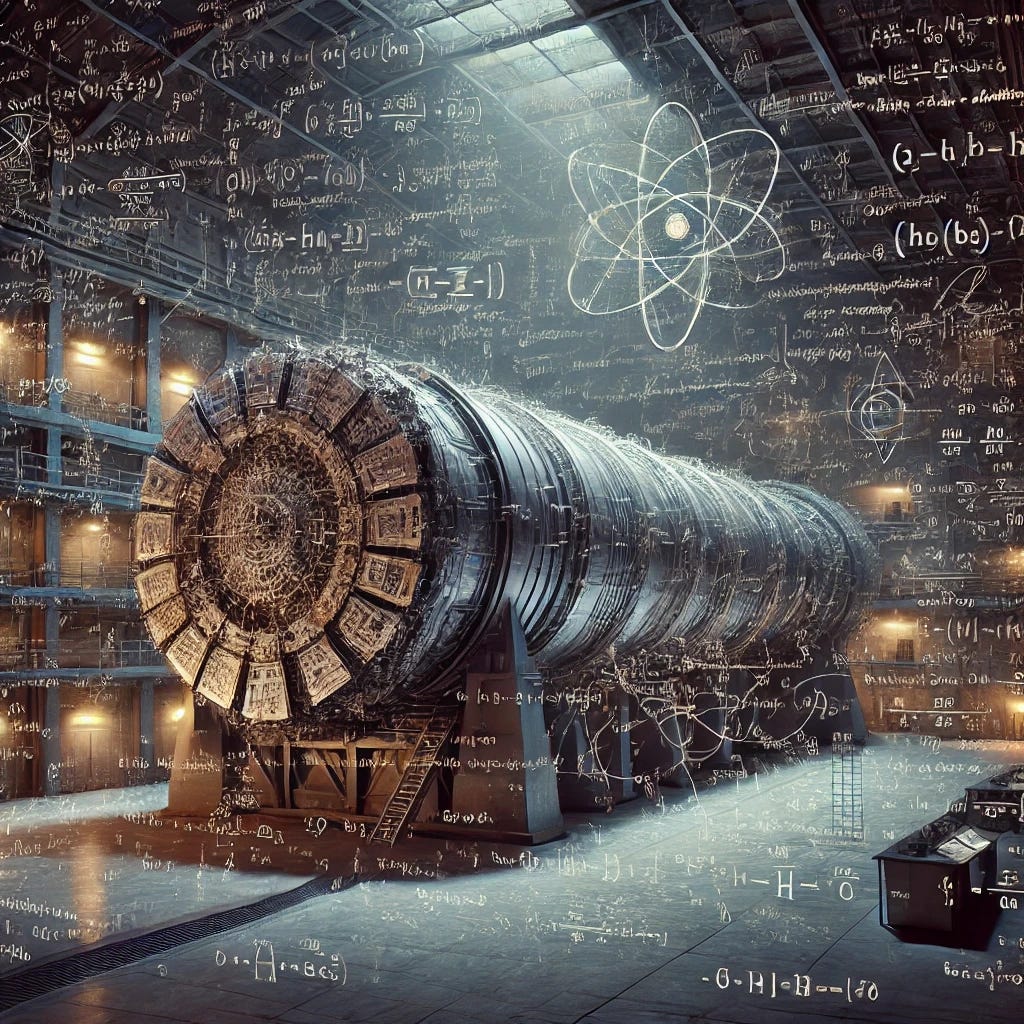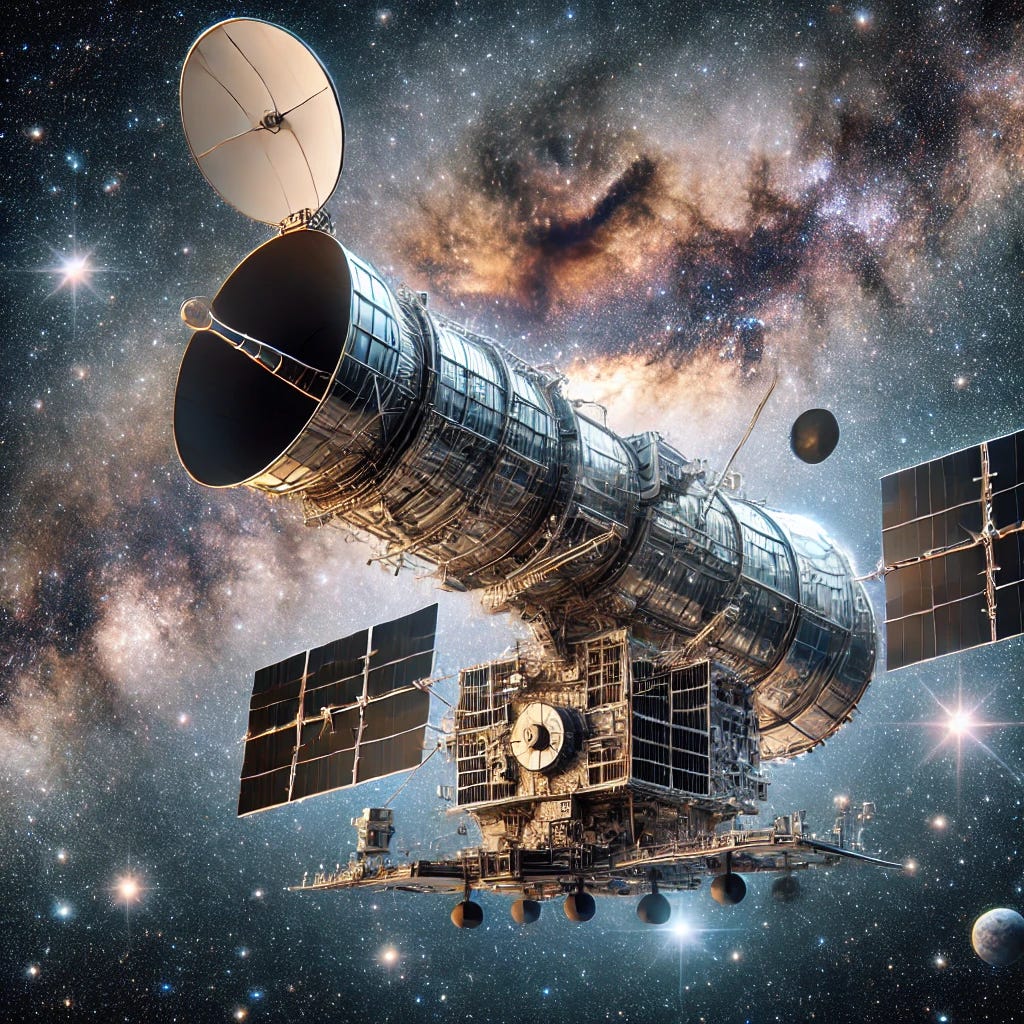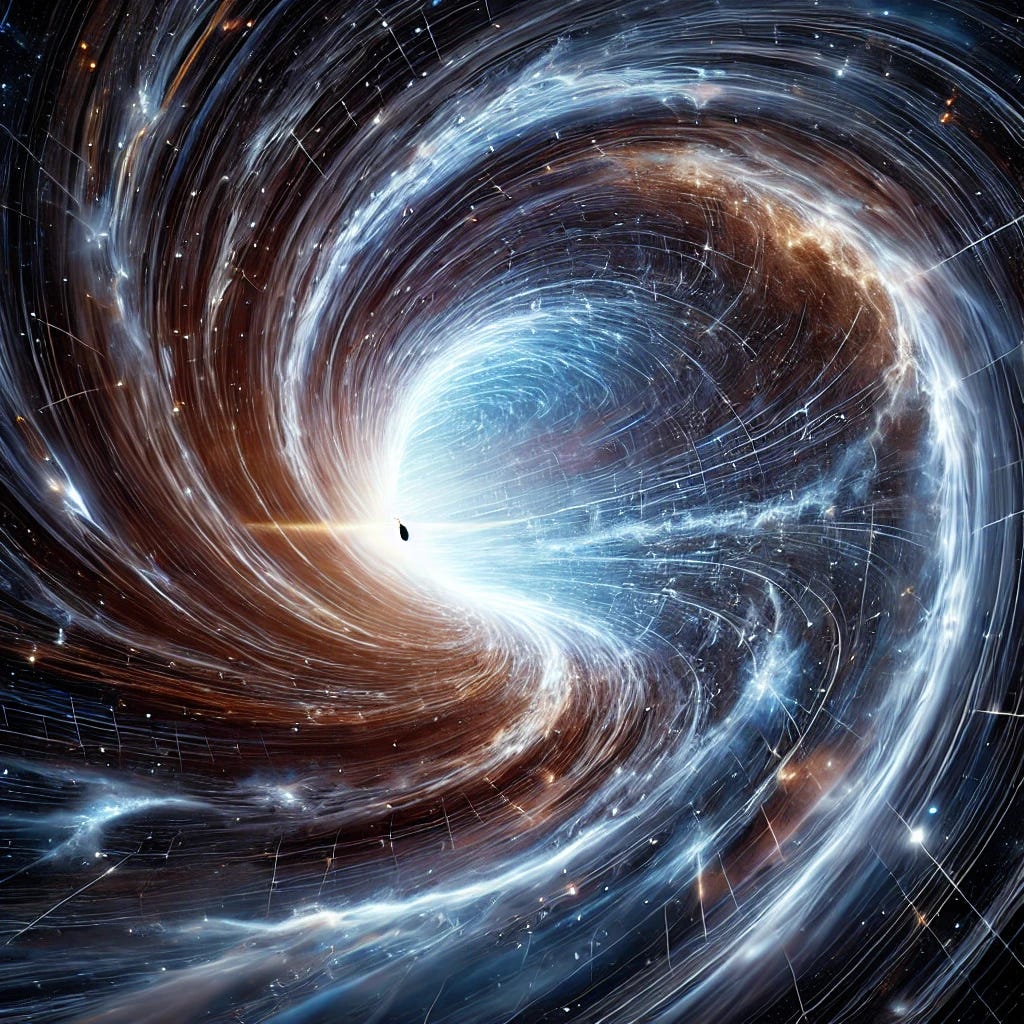Einstein's Final Puzzle—Solved by a Midwestern Programmer
Prepare to Rethink Everything About Time, Space, and the Universe
Read the Scientific Paper Here:
A Groundbreaking Theory That Reshapes Our Understanding of the Universe
Everything you've been told about Cosmology is wrong. The universe isn't infinite, and it won't expand forever. Black holes aren't the one-way traps we thought they were. Time doesn't just march forward—it has a more complex structure. And quantum mechanics? It's not the chaotic, unpredictable mess it’s often made out to be.
The Big Loop Hypothesis doesn't just tweak existing physics—it revolutionizes our understanding of the universe. This model fills in the gaps left by traditional theories, offering a coherent framework that ties together everything we’ve observed in a way that finally makes sense.
Modern physics has missed the crucial link between dark energy, black holes, and the nature of time itself. Instead of relying on speculative concepts like multiverses or unknown forces, the Big Loop provides a testable, logical, and elegant explanation for the universe’s behavior—one that doesn’t contradict established physics but completes it. This new paradigm is game-changing, offering answers that could reshape everything from cosmology to understanding the flow of energy and time. It’s a breakthrough that shifts our entire perspective on the cosmos.
Finishing Einstein’s Work: The Last Piece of the Puzzle
Einstein’s ‘Blunder’: A Clue, Not a Mistake
At the time, the prevailing belief was that the universe was static—neither expanding nor contracting. Yet, Einstein’s equations of General Relativity predicted that the universe would collapse under its gravity unless some force counteracted it. To prevent this, he introduced the cosmological constant (Λ), an anti-gravity force designed to stabilize the universe.
Then, in 1929, Hubble made a groundbreaking discovery: the universe is expanding. This observation made many think Einstein’s cosmological constant was unnecessary, prompting him to call it his “biggest blunder famously.” But was it indeed a mistake?
Decades later, scientists discovered that the universe’s expansion is accelerating, driven by what we now call dark energy. The cosmological constant wasn’t an error—it was a precursor. Einstein had unintentionally introduced a term that describes an essential feature of the universe.
The Big Loop: Completing Einstein’s Vision
It all came together one day when I asked myself, "What if the Big Bang is both the past and the future?" This thought led to a crucial realization: for the Big Bang to exist, the energy must flow backward in time. Without that backward flow, it couldn’t have been there in the first place. Then, it hit me like a lightning bolt: dark energy isn’t a mysterious force accelerating expansion—it’s regular energy moving backward in time toward the Big Bang.
This insight doesn’t just add to existing physics—it completes Einstein’s vision. The Big Loop Hypothesis extends General Relativity in a backward-compatible way, removing the paradoxes, infinities, and contradictions plaguing cosmology. The universe is not infinite and stretches forever. Instead, it’s a self-contained system where all energy is recycled—energy that enters a black hole is sent back in time toward the Big Bang, feeding the loop.
3. Comparison to Alternative Cosmological Theories
The Big Loop Hypothesis is today's most logical, testable, and observationally supported cosmological model. Unlike speculative theories relying on extra dimensions or unverifiable assumptions, the Big Loop remains fully compatible with General Relativity (GR) and the Standard Model while resolving key paradoxes in modern cosmology.
While ΛCDM (the standard cosmological model) has had significant successes, it fails to explain critical anomalies like the Hubble Tension, the nature of dark energy, and singularities in black holes. The Big Loop Hypothesis naturally resolves these issues by revealing that time is a closed loop, enforcing energy conservation and eliminating infinities.
It will be tough to refute this model entirely. It follows Occam’s Razor, requiring fewer assumptions than competing theories while aligning with known physics.
How the Big Loop Hypothesis Outperforms Other Theories
The current models of cosmology are confusing and overly complicated. They are focused on elegant math rather than an intuitive understanding of the universe. The Big Loop combines this with a straightforward and more intuitive model that matches observational data better.
Compare The Big Loop to the other models and see why it is superior!
The Current Models
Current models face several significant issues. Gravity remains poorly understood, with no clear resolution of its behavior. These models have led to incorrect results, such as the unresolved Hubble Tension and other unexplainable phenomena.
Black holes are described as containing singularities, leading to contradictions with infinite curvature and time. Light and electricity are treated differently, creating unnecessary complexity in their behavior. Energy conservation is assumed but not thoroughly proven, leaving an unexplained gap in our understanding.
String Theory relies on unproven extra dimensions and remains untestable, yet the Big Loop requires none. It offers a more straightforward, grounded explanation of the universe's structure.
Cyclic models, like the Big Bounce and Conformal Cyclic Cosmology, propose endless cycles but lack a clear entropy reset mechanism. The Big Loop, however, naturally resets entropy by sending energy back in time through black holes, providing a more coherent and self-contained model.
Quantum Gravity models like Loop Quantum Gravity and Causal Dynamical Triangulation remain incomplete, often requiring entirely new physics to account for the quantum realm. The Big Loop solves the quantum gravity problem without relying on quantization, offering a complete and unified theory.
The Many-Worlds Interpretation is unfalsifiable and posits infinite branching universes, an assumption the Big Loop avoids. Instead, it demonstrates energy cycles within a single, closed system, eliminating the need for infinite branching and offering a far more intuitive solution.
Modern physics has settled for patchwork solutions that explain individual observations without unifying them into a complete framework. The Big Loop Hypothesis is different—it is a natural extension of General Relativity that resolves contradictions, enforces energy conservation, and removes the infinities that plague current models.
The Big Loop is not a radical new physics model—it is simply the corrected version of what Einstein was already building.
Observational Evidence: The Universe Already Supports the Big Loop
Why should you take my word for it? You don’t have to. The evidence is already out there. The Big Loop Hypothesis doesn’t rely on wild speculation, extra dimensions, or untestable assumptions. It takes what we already know and resolves the contradictions in modern physics. Even better? It makes testable predictions that align with observations and can be further verified.
Hubble Tension: The Big Loop Fixes It
The Hubble Tension is one of the biggest problems in modern cosmology. Different methods of measuring the expansion of the universe give conflicting results. ΛCDM assumes dark energy is a constant force embedded in spacetime, but this assumption doesn’t fit observations. The Big Loop provides the missing piece.
In this model, dark energy isn’t a constant property of spacetime—it’s energy flowing backward in time through black holes. This means that different methods of measuring expansion pick up on different energy flows at various points in the loop. The density of dark energy changes over time, solving the Hubble Tension naturally. Instead of patching ΛCDM with new parameters, the Big Loop follows a simple principle: energy is conserved to cycle back through time.
Entanglement Is Not Quantum “Magic”
One of the strangest aspects of quantum mechanics is entanglement—where two particles appear instantly connected, no matter how far apart. Standard quantum mechanics offers no intuitive explanation. It’s simply “spooky action at a distance.”
The Big Loop resolves this geometrically, without extra dimensions and without violating the speed limit of the universe: the speed of light. The two entangled particles are part of a single, connected energy loop in time. Their behavior isn’t an instant signal traveling between them—it’s just the geometry of how time loops interact.
This geometric interpretation completely changes how we understand entanglement. What we see as “instantaneous action” is the consequence of rendering a 4D system into our 3D perspective.
Ultramassive Black Holes Form Too Fast
Another major problem with ΛCDM is black hole formation. Observations of the early universe have found supermassive black holes that formed far too quickly under standard models. Based on the accepted timeline, these black holes shouldn’t exist yet.
The Big Loop offers a solution. Dark energy was effectively zero in the early universe. This means the universe’s early phase lasted much longer than current models assume. What looks like a contradiction in ΛCDM makes perfect sense when you realize that dark energy wasn’t always acting as we thought.
If this is true, it means that the universe is older than 14.3 billion years. The math works out, but mainstream cosmology hasn’t caught up yet. As we gather more precise data, we should see that the universe's timeline needs to be revised.
How Time Travel Works in the Big Loop Hypothesis
Time travel isn’t what science fiction makes it out to be. In the Big Loop model, time doesn’t simply "flow forward" in a straight line—it’s part of a closed system. If we could reverse time, everything wouldn’t just play backward like a movie—it would instantly reconfigure itself into a past-compatible state.
Reversing Time: What Would Happen?
Let’s be clear—reversing time is not physically possible in our current understanding. However, if you could force time to reverse, what you’d observe would radically differ from the popular idea of rewinding history.
Everything would instantly rearrange. The positions of all particles, atoms, and structures would shift instantly to match a previous configuration. It wouldn’t be a gradual transition but an immediate restructuring of the entire universe.
Nothing would be "playing backward." If you were drinking coffee, you wouldn’t watch the liquid flow back into the cup. Instead, you’d suddenly find yourself holding the coffee in the exact state it was in at that point in the past.
If you waited long enough, history would repeat exactly. Over time, events would unfold just as they did before. You would eventually be born again, live the same life, and end up in the same place, making the same decisions.
This model enforces strict causality—there are no alternate timelines, paradoxes, or deviations from the loop. The universe doesn’t "undo" things; it simply reconfigures to match its position in the cycle.
Gravity and Magnetism
In the Big Loop Hypothesis, gravity and magnetism are deeply interconnected. Magnetism isn’t a force that operates independently of gravity. Instead, magnetism is a form of gravity that defines how magnetic matter interacts with the universe.
Think of gravity as a pipe that structures the path energy must follow through the cosmos. Gravity isn’t just a force pulling matter together—it’s the framework, the structure, that guides how energy flows.
Magnetism is a manifestation of this structure, a specific way gravity influences the movement of matter. Gravity shapes how magnetic fields behave, rather than electricity creating them.
Moreover, gravity influences light as well. Gravity doesn’t just affect matter—it shapes the path of photons, bending their trajectories as they move through space, leading to phenomena like gravitational lensing. This means that gravity controls the flow of both matter and energy through the universe.
The Big Loop offers a more intuitive view if you've heard of wave-particle duality. Instead of thinking of gravity and light as waves and particles, gravity is a wave—a medium that defines the universe's energy flow. Photons, on the other hand, are particles that move through the gravitational wave. This distinction removes the confusion of wave-particle duality, offering a more straightforward, unified view of how energy flows.
Consciousness as Energy Efficiency
The Big Loop Hypothesis suggests that consciousness may be the universe's way of optimizing energy efficiency. Rather than being a byproduct of neural complexity, consciousness could drive systems toward stable, low-energy configurations, explaining why all biological or otherwise systems tend toward optimal energy states.
The universe is not perfect but constantly optimizes for energy efficiency. From galaxies to neural networks, imperfections drive complexity and adaptation. Quantum mechanics may reflect this preference, with probability clouds representing the universe's effort to maintain cohesion and conserve energy.
Does this mean a rock is conscious? Yes, in a sense. But that doesn't mean it thinks or experiences awareness. A rock became a rock because it was the most energy-efficient state. Matter self-organizes into the most efficient state for its environment: biological organisms evolve cognition to minimize survival effort and maximize energy conservation, rocks exist in their most stable form, conserving energy, and neutron stars resist collapse, maintaining structure until they transform into black holes, preserving energy integrity before redistribution.
DNA isn't just an instruction set but an efficient data storage system for survival. It encodes principles of energy conservation and optimization. Whether biological or cosmic, intelligence is crucial in optimizing the universe’s energy system.
I Need Help!
The Big Loop Hypothesis is not just a theory—it challenges everything we thought we knew about the universe. Unlike string theory or the many-worlds interpretation, it is testable, built on the foundation of existing physics, and free of unnecessary assumptions. Ignoring this model is intellectual dishonesty until scientists produce successful refutations.
Cosmology, as we know it, is complete. We don’t need to reinvent the wheel—we need to refine it. If you're a physicist, test it. If you're a science enthusiast, share it. Einstein almost had it. This is the missing piece. The universe was never infinite—it was always a loop. Let’s embrace the simplicity and elegance of a universe that makes sense. It’s time to finish what Einstein started.







